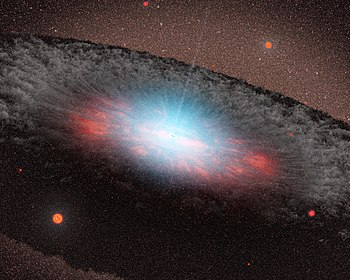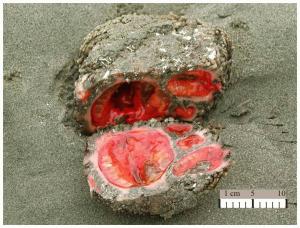Actually, astronomers suspect that these binary supermassive black hole systems are probably the result of galactic collisions. Awesome!
To date, only a few candidates for close binary supermassive black holes have been found. All are in active galaxies where they are constantly ripping gas clouds apart, in the prelude to crushing them out of existence. In the process of destruction, the gas is heated so much that it shines at many wavelengths, including X-rays. This gives the galaxy an unusually bright centre, and leads to it being called active.An artist's conception of a supermassive black hole and accretion disk. (Photo credit: Wikipedia)
On 10 June 2010, Dr Fukun Liu from Peking University in China with colleagues spotted a tidal disruption event in the galaxy SDSS J120136.02+300305.5 (J120136 for short). They were scanning the data for such events and scheduled follow-up observations just days later with XMM-Newton and NASA's Swift satellite.
Full article here!




Recent Comments
Alec Defosses :
:
Good read. I saved the page for future visit. read moreShakira Furci :
:
Incredibly interesting piece of content. I was in search of read moreRitts :
:
Your site is amazing. I wonder just how do you read moreMeda Kiner :
:
I found your blog in the "Trackback" section of another read moreGale Mady :
:
The integration of bears into a godly American holiday read moreB. Samuel :
:
This information on how earth worms behave is very fascinating. read more